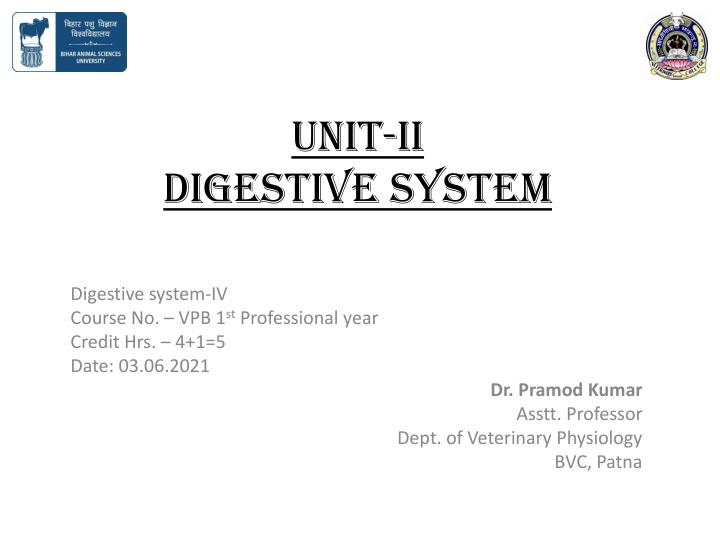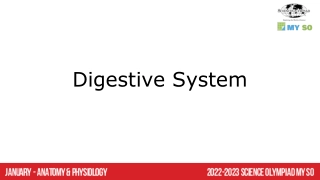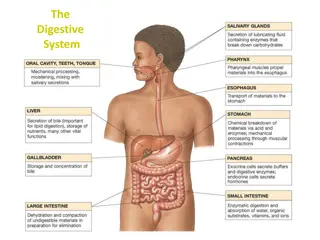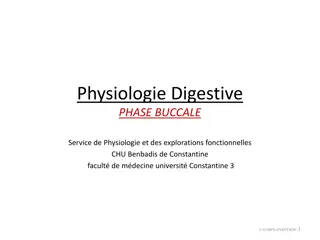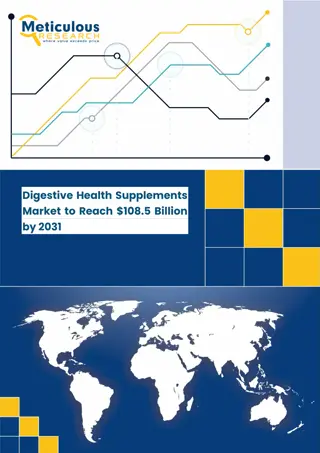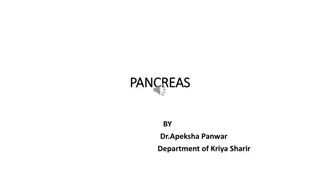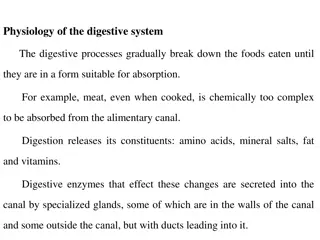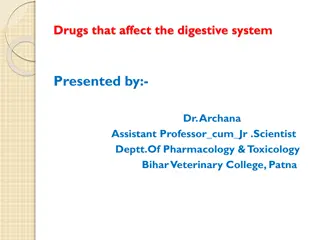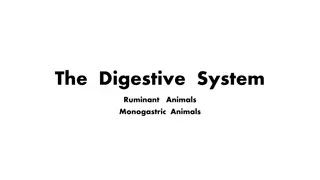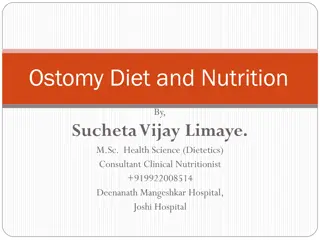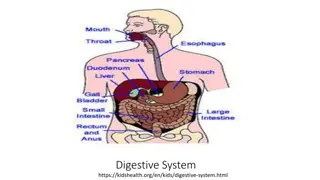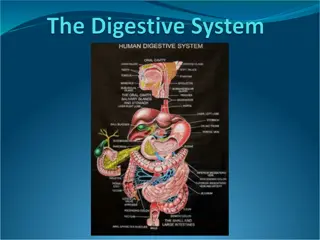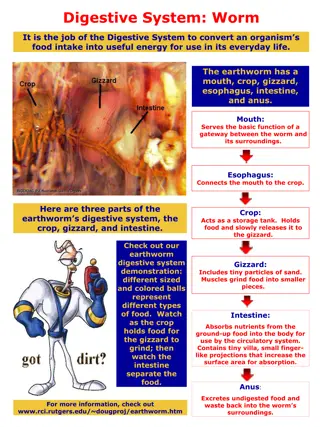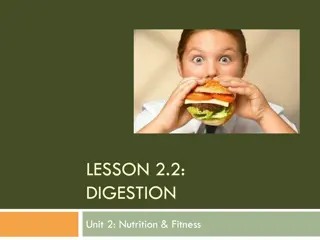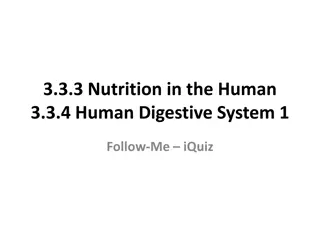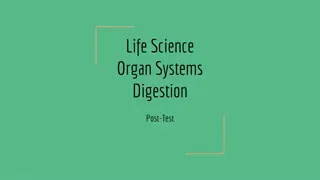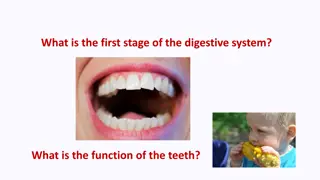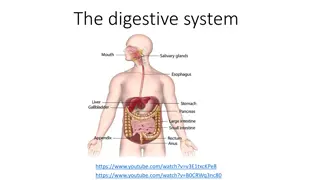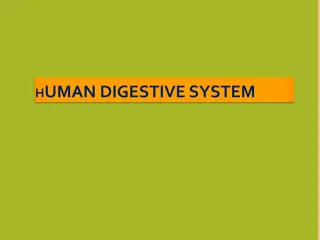Digestive System
When preparing library space for community use post-Covid-19, remember key steps like coordinating with local authorities, implementing safety measures, adjusting furniture layout, and more. Discover valuable insights for the pre-opening phase and the subsequent adjustments in the months following reopening.
Download Presentation

Please find below an Image/Link to download the presentation.
The content on the website is provided AS IS for your information and personal use only. It may not be sold, licensed, or shared on other websites without obtaining consent from the author.If you encounter any issues during the download, it is possible that the publisher has removed the file from their server.
You are allowed to download the files provided on this website for personal or commercial use, subject to the condition that they are used lawfully. All files are the property of their respective owners.
The content on the website is provided AS IS for your information and personal use only. It may not be sold, licensed, or shared on other websites without obtaining consent from the author.
E N D
Presentation Transcript
Unit-II Digestive System Digestive system-IV Course No. VPB 1stProfessional year Credit Hrs. 4+1=5 Date: 03.06.2021 Dr. Pramod Kumar Asstt. Professor Dept. of Veterinary Physiology BVC, Patna
Digestion in Birds: Regulation of food intake- It is a complex process & involves both peripheral & central control regulation Peripheral regulation involves the GI tract and liver Crop and gizzard monitored the ingestion of food by distention sensitive receptors Meal termination is associated by distention of gizzard less by crop For the termination of feeding in the crop and intestine various receptors act like glucose, osmotic and intestinal amino acid when stimulated by glucose, hypertonic saline or amino acids By the hepatic portal blood system, liver absorbs the nutrient from the intestinal tract The information regarding absorption is communicated by brain via signals through the vagus nerve For ingestion of food CCk, bombesin, gastrin and neurotensin peptides are responsible, produced by the avian intestinal tract
Central regulation of food intake includes the systems: Sl No. Nerves systems 1 Trigeminal Mandibulation 2 Gustatory Taste 3 Olfactory Smell 4 Visual See or sight 5 A.N.S. Parasympathetic division
Cholecystokinin and melatonin acts as reduction factor for food intake while edtemperature, edenergy diet level & protein diet levels also act as external factors. Gastro-intestinal tract motility: o Food is swallowed by the stimulation of the tongue & muscles reflex causes entering into the esophagus by peristalsis o For gastro-duodenal contraction, rhythmic/minute occurs which contracts the ventriculus & passes the peristaltic waves through the duodenum, o Contraction of gizzard muscles occur causes contraction of pylorus & isthmus o The esophagus, crop, pro-venticulus innervated by vagal nerves o Colonic motility occurs continous & are anti-peristalsis causes (a) movement of urine from the cloaca into colon & ceca for absorption of H2O (b) filling of the ceca a sequence of 3 & gizzard are
o This defecation o The rate of food passage is influenced by the consistency, fat content, hardness, water content of the food & amount absorb o Likewise, the age & the metabolic rate is associated with them are also the factors which influenced the food passage rate o The slower rate of food passage is directly related with the edmicrobial fermentation of fibrous feed stuffs in the ceca & thus utilizes its extreme in the adult birds. Secretion & Digestion: Only mucus is secreted in the buccal cavity and crop which tends to moistens & lubrication of the food Hence, starch digestion occurs in the crop. Amylase is secreted in very few amounts for carbohydrate digestion In pro-venticulus, simple mucosal gland secrete mucus & compound sub-mucosal glands secrete mucus as well as HCl & pepsinogen anti-peristalsis contraction ceases just before
Compound glands = chief + parietal cell of the mammalian stomach The protein digestion initiates in ventriculus in acidic medium Pro-venticulus secrete pepsin which hydrolyses protein molecules Gizzard breakdown the food material into small pieces & mixes with digestive fluids The pH ranges between 0.5 to 2.5 Almost 1 ml of gastric juice/Kg b.wt./hour is secreted by poultry Chemical digestion starts in the large intestine Exocrine cells of the pancreas in the intestinal lumen & membrane digestion of saccharides occurs via the action of digestive enzyme The large protein molecules hydrolyze into oligo-peptides & di-peptide fragments by the secretion of pancreatic trypsin, chymotrypsin in the intestinal lumen
The free amino acids being released by the pancreas & aminopeptidase in the brush border membrane of enterocytes transported to microvillus membranes & perform membrane hydrolysis of oligopeptide & dipeptide fragments Pancreatic -amylase in the intestinal lumen cleaves maltose units leaving -dextrins limit in amylopectin Maltose, maltotriose & -limit dextrins are water soluble & diffuse through an aqueous dispersion of mucin absorbed by the glycocalyx covering the microvilli of enterocytes Maltose & sucrase-isomaltose in the apical membranes hydrolyse into glucose & absorbed by enterocytes The mucin layer protects the enterocyte from the degradation by pancreatic proteases Intestinal pH ranges from 5.6 to 7.2 Bile salts emulsify the fat particles for their further digestion and reabsorbed in the lower ileum & re-circulated to the liver to be used again as in mammals
The proximal ceca has the ability to transport mono- saccharides & amino acids against a concentration gradient Microbial digestion of cellulose also occurs in the ceca Reflex of urine into ceca exposes the cecal microflora to urea & uric acid for degradation Cecal microflora uses the recycled nitrogen Microbial synthesis of vitamins-B occur in the ceca but are not absorbed by the bird So, feces of chickens are the source of vitamin B12& other vitamin-B`s Regulation of G.I. tract motility and secretion: The presence of food, its smell & taste gives the secretion of saliva into the buccal cavity, esophagus & crop The motility rises due to the presence of food goes descended & is controlled by reflex Gastric activities including gastric motility & secretion are regulates via cephalic and gastric phase
Vagus stimulation cause the pro-venticular secretion & motility of the pro-venticulus & gizzard Neural & humoral mechanism act to gastric secretions & motility Serotonin acts as a humoral mediator in avian gastric regulation There is less inhibition of gastric secretion after duodenal distention & this is blocked by the serotonin The intestinal secretion & motility is edby vagal stimulation & latter part is edby the distention of the duodenum Avian secretion stimulates ed (aqueous component) but not edenzyme secretion The secretion of pancreatic enzymes initiates on the release of CCk On feed, the poultry have edbile secretion due to CCk Absorption: Almost the absorption of the dietary fatty acids, carbohydrates & amino acids occurs in the duodenum & proximal part of jejunum. pancreatic secretion
